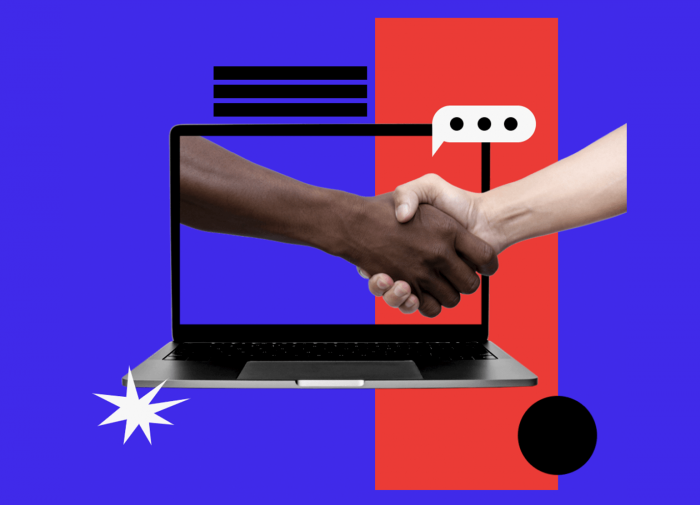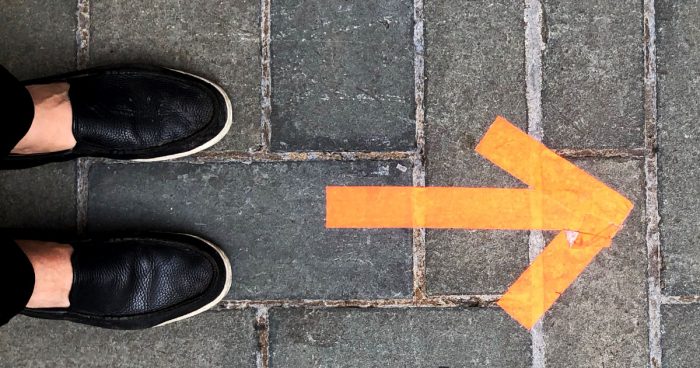After more than 20 years in the design world, I’ve done my fair share of freelancing. But today, I’m also a partner at a creative agency whose designers occasionally freelance on the side, so I’ve got a unique perspective on the practice. There are lots of great reasons to experiment with freelance while you’ve got a full-time gig: You can earn extra cash, express more creative freedom, and work with a long-term client or friend, to name a few benefits.
But it’s important to compartmentalize properly, so that one of your responsibilities doesn’t damage the other. Here’s how you can do just that.
Prevent a Conflict of Interest
First, let’s start with the obvious: does your employer allow freelancing in the first place? Some workplaces might forbid additional outside employment because they don’t want their employees spending their intellectual capital and personal time (or worse: company time) on unrelated work.
Before you even begin to freelance, learn if you have such a clause in your agreement with your company. (It’d appear in your employee handbook or your signing letter). If you don’t find a written policy and you are not doing work that conflicts with your day job, consider this an instance where it’s better to ask for forgiveness than permission.
My agency, Anchor & Alpine, prohibits designers from freelancing without permission. If we hire someone with a thriving freelance practice, we work with them to responsibly de-escalate that practice over time. We do this to ensure that we’re not competing against our own employees for projects and to ensure our team maintains a healthy work/life balance. That said, we’re usually happy to give permission, and every designer on our team (including me) does freelance work. When one of my teammates has a freelance project they’re interested in, they’ll start by bringing it to one of our agency’s partners. If it’s a good fit, we write up an agreement that states the designer can work on it outside of work hours, and that they can use their company property for the project.
Maintain Rigid Boundaries
If you draft a similar agreement with your employer that states you can use company property to complete freelance work, then you’re in the clear to do so. However, without such an agreement in place, using your company’s hardware and software for unrelated business could present a big problem.
Freelancing on Company Property
If you do freelance projects on your work laptop, your employer might be within its rights to say that it owns the work completed with its property. Now you’re in the weeds on copyrights; you’ll fray your client relationships; in some cases, you might even have a lawsuit in your future.
As best you can, use a personal laptop with software that your company didn’t pay for. Use your personal email address, or create a new one for your freelancing business. If that is not possible (but seriously, it should be your priority), keep your files bifurcated, at the very least.
Freelancing on Company Time
Just like an employer can sue you or claim ownership of your work if you use its property, it might claim your creations if you freelance on company time.
Most workplaces are “work for hire,” meaning they own everything you produce for them. That includes every draft, discarded concept, and random idea you shared in a meeting. Conversely, in freelance relationships, only the result is the client’s property, and as the creator, you transfer the copyright to them.
One good way to prove your IP ownership is to make sure you keep good records—that’s vital as a freelancer. Track the amount of time that you work—and not just the number of hours, but the specific hours. For example, if you worked from 7:00pm to 9:00pm, be specific; don’t just say that you worked for two hours. If you ever need to prove that you created the IP on your own time, this will help. And don’t think about fudging the numbers, because there will likely be a paper trail of emails or online activity that proves that you were working.
Don’t Forget about Work / Life Balance
Most of us got into design because we were attracted to the creative side. We come from art school, boot camps, or university programs, ready and excited to spend our days as working designers. However, too much of a good thing isn’t a good thing after all. If creative freelance work is part of your regular routine, beware of severe burnout.
Schedule Freelance Downtime
One way to stay ahead of and away from burnout is to proactively schedule time away from freelancing. Maybe you take off all of February, June, and December. Maybe you set aside one day of the weekend and declare that no freelance day. If you are working more than a 40-hour work week it’s imperative to plan ahead for your week and your downtime or you won’t be at your best when you need to be.
One designer I interviewed for this story has a hard and fast rule: “You can only work two weekends in a row, then you need a break.” If you spend multiple nights and weekends freelancing, you might reach the point that you can’t take it anymore. Put safeguards in place to ensure that you’re giving yourself enough time to mentally recover from work.
Remember Your ‘Why’
Years ago, I was the creative director at a fintech company, and one of the designers asked about doing freelance. I asked him what he got from freelancing, and he said he needed to make more money to care for his family. I was able to go to my manager and explain that we needed to give this person a raise so they could stay focused on what we were trying to do.
Be honest with yourself about why you take on freelance work.
If it’s for the money, get focused and efficient and make the cash. If you want creative freedom, make sure you are upfront with freelance clients. I’ve told people that I don’t take on many freelance clients, and the ones I work with give me a higher level of creative freedom. If you are helping a former client, make sure they understand that you need to work with a schedule that works around your day job.
My rule is that I only do things for love or money. It has to be a project or a person I love and actively want to help succeed or something that pays well if I give up my free time for freelance.
Understanding the Mental Load
It’s tempting to think that you’ll knock out a 2-hour project on a Saturday morning before the day gets into full swing, and that’s that. Remember, it’s more than the project; it’s also finding and maintaining the client and keeping records. You may even dread the time you spend freelancing instead of what you usually do outside work.
If it hangs over you all week and you feel like you robbed yourself of a weekend, it’s time to reevaluate. The mental load of balancing two jobs can be difficult, even if they are both going well.
Overall, freelancing while holding a full-time job can be fulfilling, with the added opportunity to earn extra income, exercise creative freedom, and maintain valuable relationships with people. It is essential to plan and prioritize to ensure a healthy balance between full-time and freelance work, but with the right approach, it can be a great way to achieve career and financial goals.


